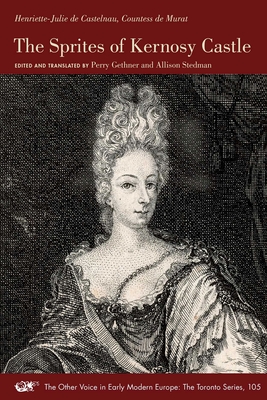
The Sprites of Kernosy Castle (The Other Voice in Early Modern Europe: The Toronto Series #105)
Description
A subversive novel from 1710 that questioned political and aesthetic ideologies in eighteenth-century France.
This novel reflects a shift in French values at the turn of the eighteenth century, which saw increased interest in the private lives of the aristocracy and the pre-Enlightenment questioning of political and religious orthodoxies. Novels of fiction and leisure gained popularity, and it was during this time that Henriette-Julie de Castelnau, the Countess de Murat, published her second leisure novel, The Sprites of Kernosy Castle. Combining humor, social satire, and a proto-feminist outlook, Murat crafts a well-constructed plot where the supernatural is debunked. Murat’s career was cut short when a series of “misdemeanors” related to the countess’s homosexual tendencies led to her arrest in 1702. Sprites, which was released during a partial reprieve from prison, is the final published work of this independent-minded early feminist author.
Praise for The Sprites of Kernosy Castle (The Other Voice in Early Modern Europe: The Toronto Series #105)
"The Sprites of Kernosy Castle (1710) by the Countess Henriette-Julie de Murat illuminates the history of the novel from the late seventeenth to the early eighteenth century and Murat’s role as a transitional figure who, as she evolves, moves away from the marvelous and from earlier models of the novel. By undermining the marvelous—the sprites are in reality noblemen—and by situating the action in the author’s present, rather than in the sixteenth century or earlier as had been typical, Murat challenges both the genre of the fairy tale, in which she had once engaged, and that of the novel. The introduction provides valuable context—the history of leisure, the history of theater as a part of aristocratic life—and crucial information about Murat’s life and her contributions to the development of the novel."
— Anne E. Duggan, Professor of French, Classical & Modern Languages, Literatures, and Cultures, Wayne State University
